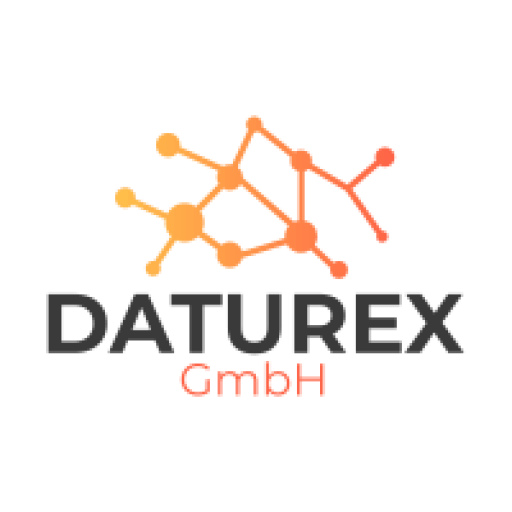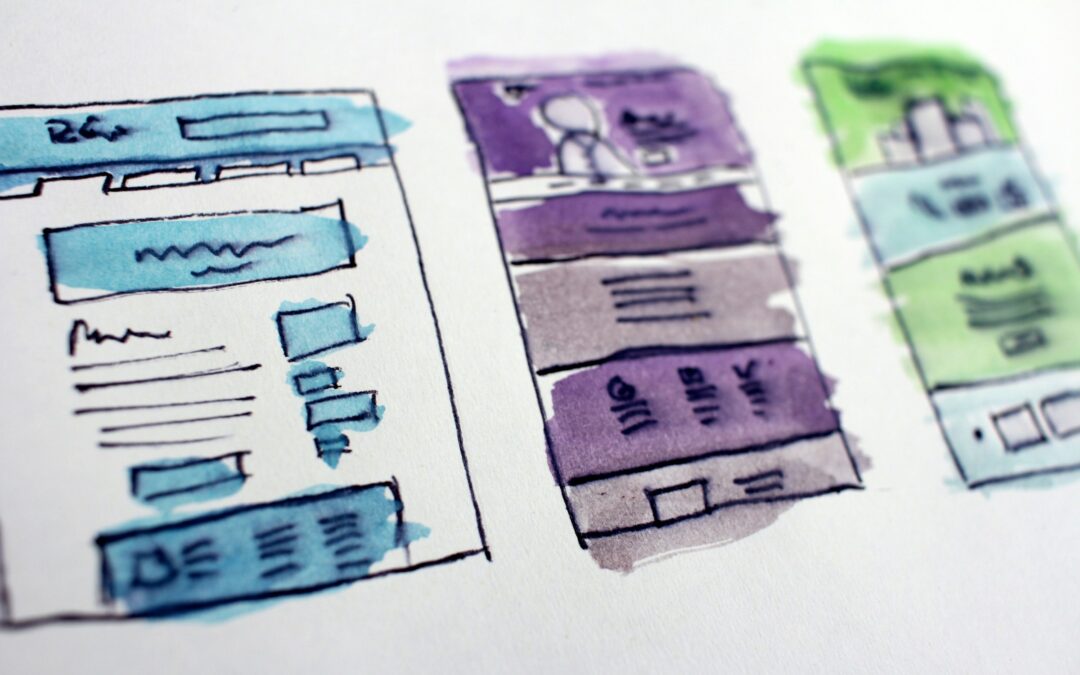The Blockchain technology revolutionizes the Web development. It offers new ways for safe and Decentralized applications. Web developers are faced with exciting opportunities to shape the future of the Internet.
Blockchain uses a Distributed ledgerthat stores data in a tamper-proof manner. Each block is unchangeable and chronologically linked. This makes the technology particularly resistant to tampering.
New horizons are opening up for web developers. They can now create applications that do not require a central control instance. This increases security and gives users more control over their data.
The Cryptography plays a central role in the blockchain. It ensures the integrity of the data and protects against unauthorized access. Web developers need to familiarize themselves with these concepts in order to exploit the full potential of the technology.
Important findings
- Blockchain offers tamper-proof data storage
- Decentralization increases resilience
- Web developers can create more secure applications
- Cryptography is a core aspect of the blockchain
- Users gain more control over their data
Introduction to blockchain technology for web developers
The Blockchain technology is revolutionizing the digital world. It offers new possibilities for secure and transparent transactions. Web developers are facing exciting challenges and opportunities.
What is blockchain and how does it work?
Blockchain is a digital, decentralized accounting system. It stores transactions in blocks that are linked together. The Bitcoin blockchain is a well-known example of this. It can process up to one million writes per second and store several petabytes of data.
Basic concepts: Distributed ledgers and consensus algorithms
The Distributed ledger technology forms the foundation of the blockchain. It enables a Decentralized data storage without a central control authority. Consensus algorithms such as proof-of-work or proof-of-stake ensure the integrity of the system. With Bitcoin, miners have to solve a cryptographic puzzle in order to create a new block.
The importance of blockchain for web development
For web developers, the Blockchain technology new perspectives. It enables secure data storage, better identity management and transparent transaction processing. The integration of blockchain in web applications increases trust and security. Traditional banks are increasingly using blockchain to reduce costs and optimize processes.
"Blockchain technology focuses on security, transparency, anonymity and decentralization in various industries."
Despite challenges such as slow transaction speeds and complex implementation, blockchain offers great potential for the future of Web development.
Blockchain for web developers: secure and decentralized applications
Blockchain technology opens up Web developers new possibilities for secure and Decentralized web applications. Use these Peer-to-peer networks and offer increased resistance to failures. Developers are increasingly relying on Blockchain securityto promote trust and transparency.
According to current statistics, web developers learn Web3 for the development and integration of Blockchain applications. This includes the following core aspects:
- Understanding blockchain
- Decentralized applications (dApps) develop
- Implementing smart contracts
- Ensuring secure transactions
- Ensure data integrity
- Building user trust
Platforms like Ethereum enable the implementation of Smart contracts for complex, trustless transactions. This revolutionizes the way web developers design and implement applications.
| Form of training | Number of participants | Duration | Location |
|---|---|---|---|
| Presence/Online | 1-8 persons | 2 days (09:00-16:00) | Cologne-Deutz/Virtual Classroom |
Web developers benefit from hands-on training courses that offer a balanced mix of theory and practice. With blockchain technology, they can develop innovative, secure and Decentralized web applications that meet the requirements of the digital future.
Smart contracts and their role in web development
Smart contracts revolutionize the Web development through Automated contracts and Decentralized applications. These self-executing programs on the blockchain open up new possibilities for secure and efficient transactions.
Definition and functionality of smart contracts
Smart contracts are digital agreements that are based on Blockchain platforms like Ethereum are executed. They function automatically as soon as defined conditions are met. This enables trustless transactions without intermediaries.
Possible uses in web applications
Smart contracts are used in a variety of ways in web development. They enable:
- Tokenization of assets
- Automated processes in supply chains
- Decentralized financial services (DeFi)
- Transparent licensing and rights management
One example is the blockchain game CryptoKitties, which had 1.5 million users at its peak.
Advantages and challenges during implementation
Smart contracts offer numerous advantages:
- Increased security through decentralization
- Increased efficiency through automation
- Transparency of all transactions
However, there are also challenges. An error in a DAO led to the loss of 50 million US dollars. The complexity of development and legal uncertainties remain hurdles to widespread adoption.
| Platform | Main feature | Application example |
|---|---|---|
| Ethereum | Pioneer for smart contracts | DeFi-applications such as Uniswap |
| Tezos | Extensive smart contract functions | Self-updating ledger |
| Binance Smart Chain | Fast transactions | PancakeSwap for token swaps |
Decentralized applications (DApps): Architecture and development
DApps are revolutionizing web development with their decentralized architecture. They use Blockchain platforms as a basis and are an important building block for Web3. DApps consist of a front end, often in JavaScript, and a back end of smart contracts in the blockchain.
The development of DApps requires special knowledge. Programmers use languages such as Solidity for Ethereum-based projects. Other Blockchain platforms support Java or JavaScript for smart contracts.

DApps offer several advantages over traditional web applications:
- Increased security through cryptography
- Transparency thanks to public blockchain
- More control for users over their data
- Resistance to censorship and outbursts
The development of DApps is steadily increasing. According to statistics, the market for Blockchain applications has been growing strongly since 2016. Large companies such as IBM, Walmart and Visa rely on this technology.
| Year | Milestone |
|---|---|
| 2009 | First blockchain application (Bitcoin) |
| 2016 | Increase in open source platforms (Ethereum, Hyperledger) |
| 2022 | Crypto winter: Challenges for the industry |
| 2023 | Increased regulation, but ongoing development |
Despite challenges, the future of DApps remains promising. They form the backbone for Web3 and enable new business models. Developers should familiarize themselves with this technology in order to create future-proof web applications.
Security aspects of blockchain technology in web development
Blockchain technology is revolutionizing web development with its innovative security concepts. It offers transparent and unchangeable transactions, which ensures trust and security in decentralized systems.
Cryptographic basics
Cryptography forms the foundation of the Blockchain security. Each block contains a record of several transactions that are encrypted using complex mathematical algorithms. This encryption ensures the integrity and confidentiality of the data.
Data protection and data security in decentralized systems
Decentralized systems offer increased Data protection through distributed data storage. In the blockchain, information is not stored in a central location, but distributed across a network. This makes unauthorized access more difficult and increases resistance to cyber attacks.
Challenges and best practices
Despite their advantages Blockchain applications challenges such as scalability and energy efficiency. Best practices include regular security audits and the implementation of robust encryption standards. Experts also recommend programming smart contracts carefully, as they can no longer be changed once they have been published.
| Safety aspect | Description | Meaning |
|---|---|---|
| Cryptography | Encryption of transactions | Ensures data integrity |
| Decentralized storage | Distribution of data in the network | Increases resistance |
| Smart contracts | Automated contract execution | Reduces the risk of manipulation |
Blockchain technology enables innovative approaches to identity management and access control in web applications. Through the combination of cryptography, Data protection and decentralized systems, it creates a secure basis for the web development of the future.
Integration of blockchain into existing web applications
The Blockchain integration into existing web applications opens up new possibilities for security and efficiency. Developers are increasingly relying on Hybrid applicationsthat combine traditional architectures with blockchain elements. These approaches enable a gradual introduction of the technology without having to completely restructure existing systems.
API interfaces play a central role in linking web applications with blockchain networks. They enable seamless data exchange and the use of blockchain functions within familiar web environments. Developers must consider aspects such as data modeling, scalability and user-friendliness during integration.

- Increased safety through Decentralized data storage
- Improved transparency for transactions
- New functionalities such as smart contracts
- Reduction of fraud risks
According to forecasts, the value of blockchain technology will increase to 39.7 % by 2025. billion dollars estimated. This underlines the enormous potential for companies that integrate blockchain into their web applications.
| Area of application | Advantages of blockchain integration |
|---|---|
| E-Commerce | Secure payment processing, protection against fraud |
| Finance | Transparent transactions, reduced costs |
| Logistics | Improved traceability, increased efficiency |
The integration of blockchain into web applications is a forward-looking step. It not only improves the security and efficiency of existing systems, but also opens up new business opportunities in various industries.
Blockchain frameworks and tools for web developers
For web developers there are numerous Blockchain frameworks and Development tools are available. These make it much easier to create secure and decentralized applications.
Overview of popular blockchain platforms
Ethereum is one of the best-known platforms for the development of smart contracts. It offers a robust infrastructure and supports the programming language Solidity. Other important platforms are Hyperledger and EOS, which each have their own strengths for different use cases.
Development environments and libraries
Developers like to use special Development tools back. Truffle and Remix are popular environments for the creation of smart contracts. Web3.js is an important library that enables interaction between web applications and the blockchain.
Testing and debugging of blockchain applications
There are specialized tools for testing and debugging blockchain applications. Ganache simulates an Ethereum blockchain and enables developers to test their applications in a secure environment.
| Framework | Main feature | Area of application |
|---|---|---|
| Ethereum | Smart contracts with Solidity | DApps, ICOs |
| Hyperledger | Modular architecture | Business solutions |
| EOS | High transaction speed | Scalable DApps |
Choosing the right Blockchain frameworks depends on the specific requirements of the project. Ethereum is particularly suitable for decentralized applications, while Hyperledger is often used in enterprise solutions. With the right Development tools web developers can take full advantage of blockchain technology and create innovative, secure applications.
Future prospects: Web3 and the evolution of the Internet
Web3 heralds a new era of the internet. It is based on blockchain technology and promises a Decentralized Internetin which users have more control over their data. In the Blockchain ecosystem innovative applications that will shape our digital future.
DeFior decentralized financial applications, are revolutionizing the financial sector. They enable direct transactions without intermediaries and make financial services accessible to everyone. This development could pose major challenges for traditional banks.
NFTs open up new opportunities for digital property and the creative industries. Artists can market their works directly and profit from every resale. This creates new sources of income and changes the way we perceive and trade digital goods.
The development of Web3 also brings challenges:
- Scalability: Blockchain networks need to grow to handle millions of transactions.
- User-friendliness: Complex technologies must be easy to use.
- Regulation: Legal framework conditions must be adapted to the New technology be adapted.
Web developers play a key role in shaping this decentralized future. They need to learn new skills and develop innovative solutions to fully exploit the potential of Web3. The future of the internet is in their hands.
Conclusion
The Blockchain future is shaping up to be groundbreaking for web development. Since the introduction of Bitcoin in 2009, this technology has developed rapidly and is now being used in numerous industries. The decentralized structure minimizes fraud and manipulation, which opens up new possibilities for web developers.
Web development trends show that blockchain goes far beyond cryptocurrencies. It revolutionizes digital transactions through increased transparency, security and efficiency. Transactions can be completed in seconds - a major advance over conventional methods. This efficiency offers enormous potential for innovative web applications.
Decentralized technologies like Distributed ledger and smart contracts form the backbone of modern blockchain applications. They enable collaborative, transparent data management without a central instance. For web developers, this means that they can develop more robust, fail-safe systems. While integrating these technologies into existing web applications is a challenge, it also opens up exciting possibilities for the future of the internet.


Recent Comments